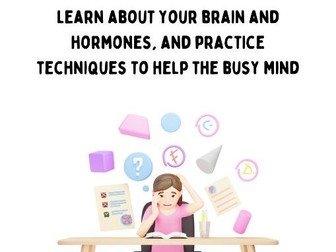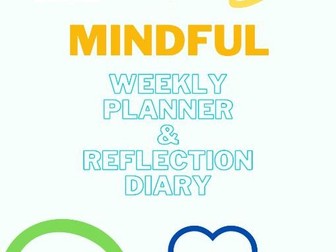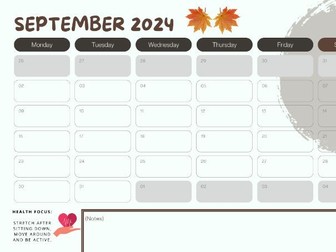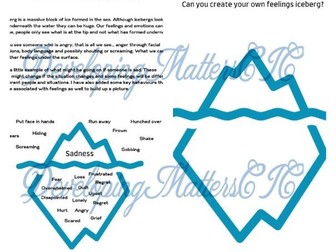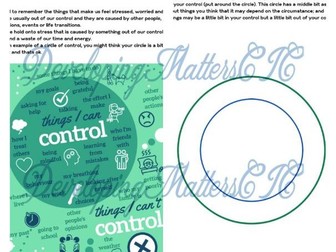SATs Support Manual for Year 6 Wellbeing
<p>This booklet is split into sections</p>
<p>Section 1 - BLUE SECTION (8 pages of learning): 1. The brain. 2. The Amygdala. 3. Fight, Flight, Freeze. 4. The Prefrontal Cortex. 5. The Hippocampus. 6. Stress Hormones. 7. Good Stress V Bad Stress. 8. Stress and Performance.<br />
Reading - learning about the brain and hormones. This information will help you to learn about specific parts of the brain that can help you during test time, including hormones that take over leading up to the test time, during the test time, and even after the tests have been completed.<br />
This information is useful for pupils to read and also to discuss either in class or with a group. Lots of questions and further information can stem from each information page about the brain and hormones.</p>
<p>Section 2 - GREEN SECTION (6 mindful learning sessions and follow-up activities): 1. Releasing Stress. 2. The Circle of Control. 3. Happy Hormones. 4. Positive and Negative Thinking. 5. Gratitude. 6. The Feelings Iceberg.<br />
Mindful activity information and worksheets to support you. You can re-do these activity sheets anytime and they also give you a chance to think and live more mindfully.</p>
<p>Section 3 - RED SECTION (8 breathing techniques and 4 mindful moments).<br />
Breathing Techniques and Mindful Moments. Try each breathing technique a few times, and try the mindful moments. Then you can add the one(s) that work for you in your strategy lists in section 4.</p>
<p>Section 4 - ORANGE SECTION (3 strategy lists for three different moods and energy levels).<br />
Your strategy lists. Fill in the strategy lists and use the strategies that work for you leading up to your tests, during test week and after the tests have been finished from the ones in section 3 and also everything that helps you in your life (what you enjoy, hobbies, things you do where you use your senses). Also think of the people around you who can help you and who make you feel better.</p>
<p>Suggested teaching would be to plan around your time, 15 - 30 minutes per day or a couple of days per week and read, discuss and carry out activities from sections A - C, then work on fitting these into the strategy lists in Section D and use these lists in SATs week.</p>
